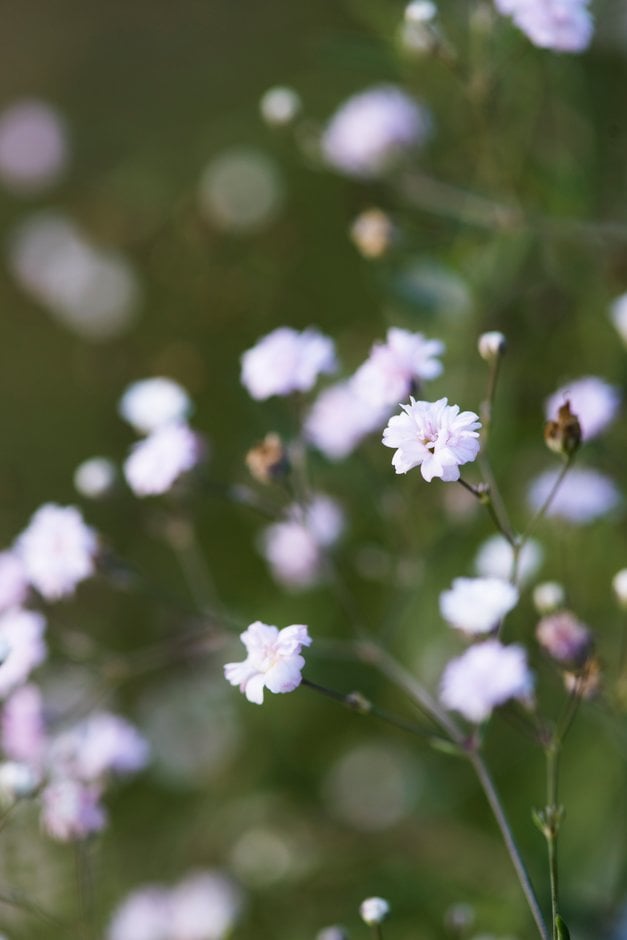Gypsophila 'Rosenschleier' (d)
baby's breath 'Rosenschleier'
A compact, semi-evergreen perennial to 30cm in height, making a low mound of slender stems with narrow, grey-green leaves. Large, open panicles of pale pink double flowers to 1cm in width appear in summer
Synonyms
Gypsophila paniculata 'Rosy Veil'Gypsophila 'Rosy Veil'
see moreGypsophila 'Veil of Roses'
Gypsophila Veil of Roses
Size
Ultimate height
0.1–0.5 metresTime to ultimate height
2–5 yearsUltimate spread
0.1–0.5 metresGrowing conditions
Moisture
Moist but well–drained, Well–drainedpH
Alkaline, NeutralColour & scent
| Stem | Flower | Foliage | Fruit | |
| Spring | Green Grey Silver | |||
|---|---|---|---|---|
| Summer | Pink | Green Grey Silver | ||
| Autumn | Green Grey Silver | |||
| Winter | Green Grey Silver |
Position
- Full sun
Aspect
South–facing or West–facing or East–facing
Exposure
Exposed Hardiness
H6Botanical details
- Family
- Caryophyllaceae
- Native to GB / Ireland
- No
- Foliage
- Semi evergreen
- Habit
- Bushy
- Genus
Gypsophila can be annuals or perennials, sometimes evergreen, with narrow, greyish leaves and large sprays of small flowers
- Name status
Accepted
How to grow
Cultivation
Grow in a deep, light, preferably alkaline, very well-drained soil in full sun; can tolerate moist soil
Propagation
Propagate by the specialised root grafting in late winter. Here scions of stem are grafted onto sections of root.
Suggested planting locations and garden types
- Cottage and informal garden
- Gravel garden
- Rock garden
- Cut flowers
- Flower borders and beds
Pruning
Cut back after flowering to encourage a second flush of flowers
Pests
Generally pest-free
Diseases
May be susceptible to a stem rot
Get involved
The Royal Horticultural Society is the UK’s leading gardening charity. We aim to enrich everyone’s life through plants, and make the UK a greener and more beautiful place.
